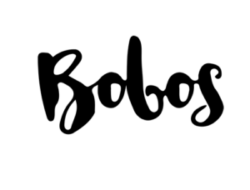In questo appuntamento dedicato al design sostenibile, curato da Henry&co., parleremo di un innovativo scooter che sta riscuotendo enorme successo sia a livello mediatico che in fatto di vendite. Stiamo parlando di Be.e, frutto dalla collaborazione tra le olandesi: Inholland University of Applied Sciences, NPSP composites, Van.Eko e lo studio di design olandese Waarmakers.

Van.Eko è stata la prima a pensare e realizzare uno scooter a tutti gli effetti bio, e non per il fatto che è elettrico, ma bensì perché la monoscocca che lo compone è stata prodotta con canapa, lino, e cellulosa. Avete capito bene.
Il motore elettrico sviluppa una potenza massima di 4 kW, raggiungendo una velocità massima di 55 km/h, mentre l’autonomia della batteria è stimata intorno a 80 km.

Possiamo definire Be.e il primo esempio nel quale l’ecologia ha saputo approcciarsi al design, riuscendo nel risultato di unire in maniera sapiente le due competenze. A nostro giudizio è un notevole passo in avanti per la mobilità elettrica che sinora non ha ancora avuto un vero e proprio portabandiera.

A noi di Henry&co sta molto a cuore il tema della sostenibilità nei progetti; questa rubrica nasce infatti per dare visibilità a coloro che vogliono emergere dal trafficato mondo del design “consumistico” finalizzato a sé stesso.
Non ci resta che aspettare la diffusione anche nel nostro paese!

In this event dedicated to sustainable design, curated by Henry & co., We will discuss an innovative scooter that is enjoying huge success both in the media and in terms of sales. We’re talking about Be.e, the result of a collaboration between the Netherlands: Inholland University of Applied Sciences, NPSP Composites, Van.Eko and the Dutch design studio Waarmakers. Van.Eko was the first to think and realize a scooter to all effects bio, and not for the fact that it is electrical, but rather because the monocoque that composes it has been produced from hemp, flax, and cellulose. You got it. The electric motor develops a maximum power of 4 kW, reaching a maximum speed of 55 km / h, while the battery life is estimated at 80 km. We can define Be.e the first example in which ecology has been able to approach the design, succeeding the result of combining the two in a masterly skills. In our opinion, it is a significant step forward for electric mobility, who has not yet had a real runner. We at Henry & Co is very dear to the issue of sustainability in the projects, and this book was in fact created to give visibility to those who want to emerge from the busy world of design “consumerist” aimed at himself. We just have to wait for the spread in our country!
